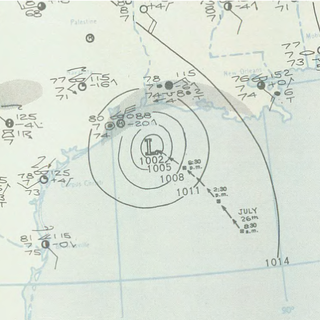 First edition | |
| Author | Paul Quarrington |
|---|---|
| Country | Canada |
| Language | English |
| Genre | Novel |
| Publisher | Random House Canada |
Publication date | 2004 |
| Media type | Print (Hardback) |
| Pages | 256 pp |
| Preceded by | The Spirit Cabinet |
| Followed by | The Ravine |
Galveston, also published as Storm Chasers in the United States, is a novel by Canadian writer Paul Quarrington, published in 2004 by Random House Canada. [1] The novel centres on a group of storm chasers who have gathered at a seaside hotel on Dampier Cay in the Caribbean Sea to await the arrival of Hurricane Claire.

Paul Lewis Quarrington was a Canadian novelist, playwright, screenwriter, filmmaker, musician and educator.

Storm chasing is broadly defined as the pursuit of any severe weather condition, regardless of motive, which can be curiosity, adventure, scientific investigation, or for news or media coverage.
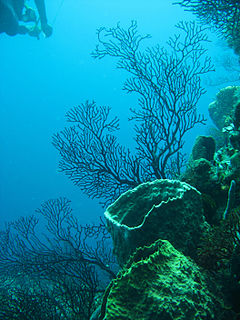
The Caribbean Sea is an American Mediterranean Sea of the Atlantic Ocean in the tropics of the Western Hemisphere. It is bounded by Mexico and Central America to the west and south west, to the north by the Greater Antilles starting with Cuba, to the east by the Lesser Antilles, and to the south by the north coast of South America.
The primary characters are Caldwell and Beverly, who are each haunted by storm-related personal losses and share a historical obsession with the 1900 Galveston hurricane that destroyed Galveston, Texas, [2] and Maywell Hope, the manager of the hotel. [1] Caldwell was first drawn to extreme weather by a childhood memory of Hurricane Hazel, and has had storm chasing experiences that included being hit by lightning, while Beverly has been obsessed with the destructive power of cyclonic motion since her daughter was killed by being sucked into the drain of a swimming pool. [1] Maywell, nicknamed "Bonefish", is the descendant of pirates who first populated the island, and has his own obsession with the weather as hurricanes hit on both of the only two occasions in his entire life that he has ever left the island. [1]
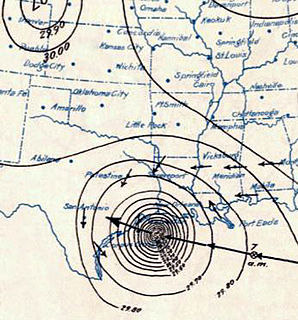
The Great Galveston hurricane, known regionally as the Great Storm of 1900, was the deadliest natural disaster in United States history, one of the deadliest hurricanes to affect Canada, and the fourth-deadliest Atlantic hurricane overall. The hurricane left between 6,000 and 12,000 fatalities in the United States; the number most cited in official reports is 8,000. Most of these deaths occurred in and near Galveston, Texas, after storm surge inundated the coastline with 8 to 12 ft of water. In addition to the number killed, the storm destroyed about 7,000 buildings of all uses in Galveston, which included 3,636 destroyed homes; every dwelling in the city suffered some degree of damage. The hurricane left approximately 10,000 people in the city homeless, out of a total population of nearly 38,000. The disaster ended the Golden Era of Galveston, as the hurricane alarmed potential investors, who turned to Houston instead. In response to the storm, three engineers designed and oversaw plans to raise the Gulf of Mexico shoreline of Galveston island by 17 ft (5.2 m) and erect a 10 mi (16 km) seawall.
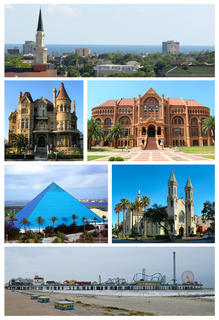
Galveston is a coastal resort city and port off the southeast coast on Galveston Island and Pelican Island in the American State of Texas. The community of 209.3 square miles (542 km2), with a population of 47,743 in 2010, is the county seat of surrounding Galveston County and second-largest municipality in the county. It is also within the Houston–The Woodlands–Sugar Land metropolitan area at its southern end on the northwestern coast of the Gulf of Mexico.
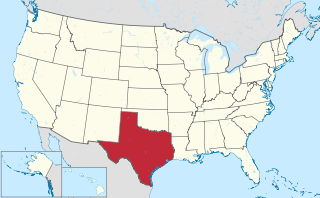
Texas is the second largest state in the United States by area and population. Geographically located in the South Central region of the country, Texas shares borders with the U.S. states of Louisiana to the east, Arkansas to the northeast, Oklahoma to the north, New Mexico to the west, and the Mexican states of Chihuahua, Coahuila, Nuevo León, and Tamaulipas to the southwest, and has a coastline with the Gulf of Mexico to the southeast.
Supporting characters include Jimmy Newton, who runs a storm chasing website and plans to stream live video of Hurricane Claire on the internet, [2] Polly Greenwich, Maywell's common-law wife and the proprietor of the hotel, and Lester Vaughan, the hotel's alcoholic handyman. [2]

The Internet is the global system of interconnected computer networks that use the Internet protocol suite (TCP/IP) to link devices worldwide. It is a network of networks that consists of private, public, academic, business, and government networks of local to global scope, linked by a broad array of electronic, wireless, and optical networking technologies. The Internet carries a vast range of information resources and services, such as the inter-linked hypertext documents and applications of the World Wide Web (WWW), electronic mail, telephony, and file sharing.
The novel was a shortlisted nominee for the 2004 Giller Prize. [3]

The Giller Prize, is a literary award given to a Canadian author of a novel or short story collection published in English the previous year, after an annual juried competition between publishers who submit entries. The prize was established in 1994 by Toronto businessman Jack Rabinovitch in honour of his late wife Doris Giller, a former literary editor at the Toronto Star, and is awarded in November of each year along with a cash reward.
